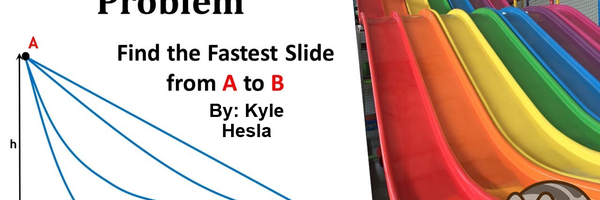Brachistochrone Curve Problem
Grade 8
Presentation
No video provided
Hypothesis
Test 1: If the marble goes down Ramp C then it will reach the bottom first.
T%est 2: If the heaviest marble (6g) traveling down Ramp C then it will reach the bottom first.
Research
Variables
Test 1: Ramp A, Ramp B, Ramp C, 5g Marbel
Test 2: Ramp A, Ramp B, Ramp C, 3g Marbel, 5g, Marbel 6g
Procedure
I'm going to set up two tables that are full the same height and symmetrical to the ground. I'm going to start the robot which will move forward once it senses a gap, it will jump. It will jump either use a mouse trap solenoid or other objects.
Observations
Test 1: LEGEND: 1st = 3 points, 2nd = 2 points, 3rd = 1 point
|
RAMP |
Test 1 |
Test 2 |
Test 3 |
Test 4 |
Test 5 |
Total Points |
|
A |
3rd |
2nd |
3rd |
3rd |
3rd |
6 |
|
B |
1st |
1st |
1st |
1st |
2nd |
14 |
|
C |
2nd |
3rd |
2nd |
2nd |
1st |
10 |
Test 2
|
Analysis
Conclusion
Conclusion 1: Ramp B was the quickest. Therefore, my hypothesis was incorrect.
Conclusion 2: The 6g marble was the quickest. This hypothesis was partially correct. It was the quickest on Ramp B and C but slowest on Ramp A.
Application
-
Brachistochrone are useful for engineering and design (EX: roller coasters). In some cases it is used to accelerate the roller coaster vehicle to the highest possible speed in the shortest vertical drop.
-
Brachistochrone curves are also involved in some sports (EX: Downhill skiing and snowboarding). You're aiming for the fastest and quickest time to get down the hill.
-
Surfing also has brachistochrone curves involved too. Most if not all waves have brachistochrone curves related or similar (most of the time not perfect).

